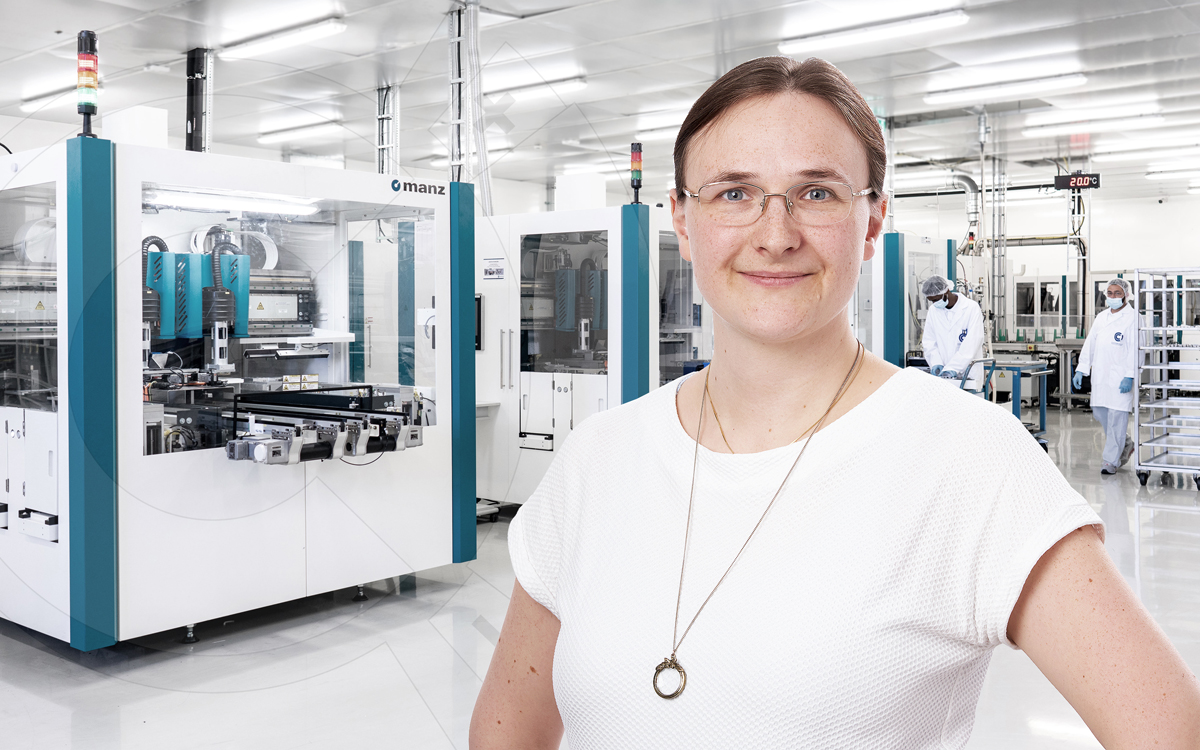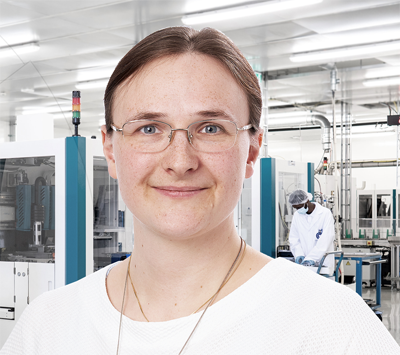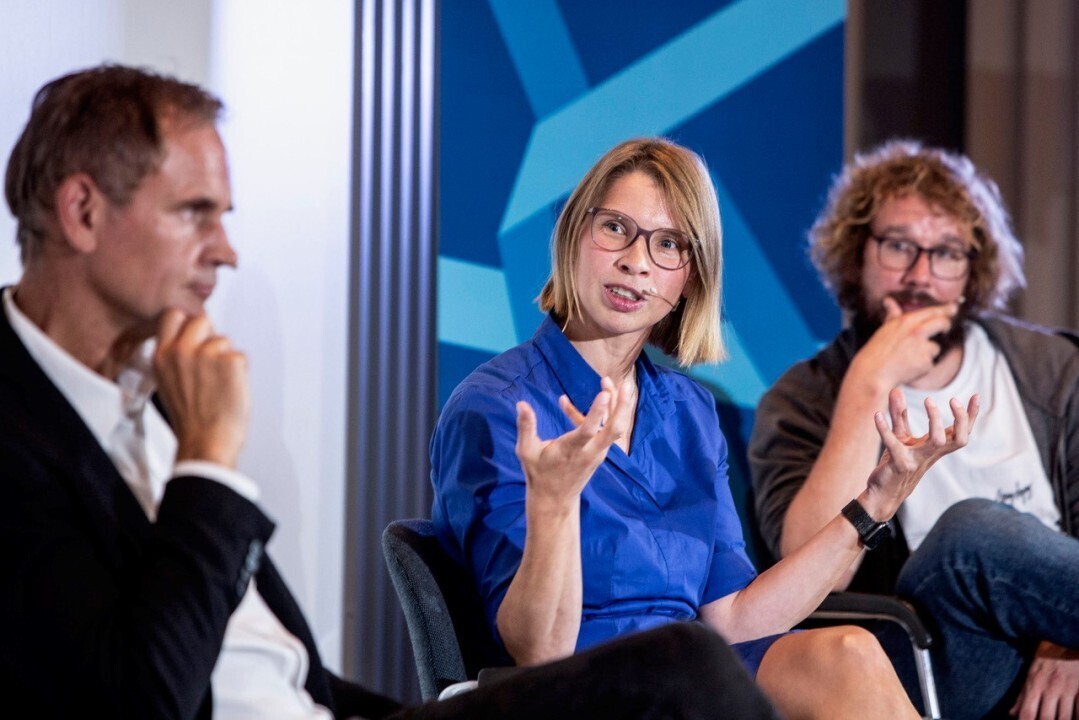Women in science: Be a giant!
Dr. Daniela Werlich is responsible for the development of lithium-ion battery cells as CTO of CUSTOMCELLS. In this article, she describes what needs to be done to bring more women into STEM professions and, like the A. Lovelace Traineeship at CARIAD, points to Ada Lovelace as an inspiration.
 Dr. Daniela Werlich - CTO CUSTOMCELLS
Dr. Daniela Werlich - CTO CUSTOMCELLS
“If I have seen further, it is by standing on the shoulders of giants,” wrote one of the most important scientists of all time, physicist Isaac Newton in a letter to inventor Robert Hooke in 1676. Funnily enough, the idea of giants’ shoulders is a metaphor that was not created by Newton himself. It is, in fact, much older and mentioned as early as the 12th century, as the sociologist of science Robert K. Merton explains in his book On the Shoulders of Giants.
The ‘shoulders of giants’ carry me in my actions every day. They form the foundation of my work in the research and development of lithium-ion battery cells. And it's not just the shoulders of researchers who have made crucial contributions to my research – from Newton to chemistry Nobel laureates Michael Stanley Whittingham, John Bannister Goodenough and Akira Yoshino. No, I also stand on the shoulders of giants like Ada Lovelace. She’s considered one of the first female programmers of our time.
Not only is it Lovelace's merits in computer science that make her one of my countless trailblazers, but rather her efforts to have proven herself in her attribution as a woman in the field of natural sciences and to have asserted herself against prejudice – and to succeed in that in the 19th century.
Where are the female chemistry professors and physicists?
5671 people started their chemistry studies at a German university in 2020, 45 percent of which are female. However, according to calculations by the German Chemical Society, the proportion of female chemistry professors at German universities was only 16.3 percent in 2018. The higher you go in the hierarchy, the fewer women you encounter. And that doesn't just apply to chemistry, but to all of the so-called STEM subjects. We don't even need to start with DAX companies in these areas and the situation with their boards of management. The pay is good, the research is innovative – and the men are still often among themselves.
The question of how to increase the much-needed proportion of qualified women in STEM professions has long been a concern for companies like CUSTOMCELLS. We believe in the enrichment that comes from diverse heterogeneous teams and do a lot to be able to create this through an appropriate hiring policy. Nevertheless, we are still a long way from reaching our goal here. In my opinion, the gender imbalance in the STEM sector will only change by turning two screws: political and social.

Political screws
An interest in science develops early, at least in my experience. Wanting to experience and understand things and processes is an aspiration that children bring with them by nature. The task of parents and teachers is to meet this desire for knowledge and encourage it. While I have had the opportunity in my life to indulge my urge to explore, I know that girls' interest in science, in particular, still often fails to find an appropriate breeding ground. Studies show that scientific interest among adolescents can already be clearly differentiated according to gender (cf. Holstermann and Bögeholz 2007). At the same time, the existing interests of young girls often do not meet the corresponding instructional design. Other studies also show that interest in science remains present or even grows with a different instructional design; however, this support must not only be provided selectively, but over the long term (Mokhonko and Windaus 2014).
Computer science for all
In my view, a modified curriculum that reflects these needs and then takes them into account, as well as the inclusion of computer science as a compulsory school subject for all types of schools, would be two important measures to increase gender diversity in the STEM field. In my function as CTO, I try to make a small contribution to the positive image of the natural sciences and to inspire adolescent girls to undertake STEM professions, and I also advertise for scientific professions every year at the Science Summer School of the free Waldorf School in Itzehoe. In this way, I aim to create visibility and show students that scientific professions can be a possible career field for them.

Social screws
Which brings us to a very crucial adjusting screw – the social perception of women. The social image of women is changing, and in no other area can we base our social standing on more shoulders of giants than here. Nevertheless, it remains to be stated that the social pressure on women – to present themselves in a certain way, to find spouses and have children, and to take primary responsibility for them – continues to be disproportionately higher than that on men.
This pressure restricts women in their choice of careers, in the pursuit of their interests and in the way they lead their lives. In order to get more women and girls interested in the natural sciences – or rather, I would say, in order to make more use of girls' and women's enthusiasm for the natural sciences – we need a new understanding of society's role in the diversity of women. That’s a task for all of us.
Companies can also make a contribution with an appropriate gender-equitable hiring policy, equal and transparent pay irrespective of gender, flexible workplace design that allows both genders to reconcile family and career, and the promotion of gender equality competence among managers. Another building block is mutual support for women, for example in the form of mentoring programs and traineeships such as CARIAD's A. Lovelace Traineeship. With these, we increase the opportunities for women to network and to be role models for each other, and therefore to embark on life paths that enable them to become giants for others.
About:
Daniela Werlich is just one of many inspiring women who are enriching the tech industry with their passion for change. At CARIAD, we share this pioneering spirit and are committed to ensuring that more women gain access to this tech world with its great potential for change. We strongly believe that more diversity, pluralism and inclusion within our teams is a key to build true products for everyone, by everyone.
CUSTOMCELLS is one of the leading companies in the fields of development and series production of special lithium-ion battery cells. Based on flexible manufacturing concepts and state-of-the-art research and production facilities, CUSTOMCELLS guarantees high-tech solutions for special applications and customized development and production of electrodes, electrolytes, battery cells and battery modules, depending on the customer's requirement profile.
If you want to make a real difference and join us on our exciting journey to transform automotive mobility, click the button below.
Sources:
- Holstermann and Bögeholz 2007. Interesse von Jungen und Mädchen an naturwissenschaftlichen Themen am Ende der Sekundarstufe I.
- Mokhonko and Windaus 2014. Förderung von Mädchen in Naturwissenschaften: Schülerabore und ihre Effekte.






